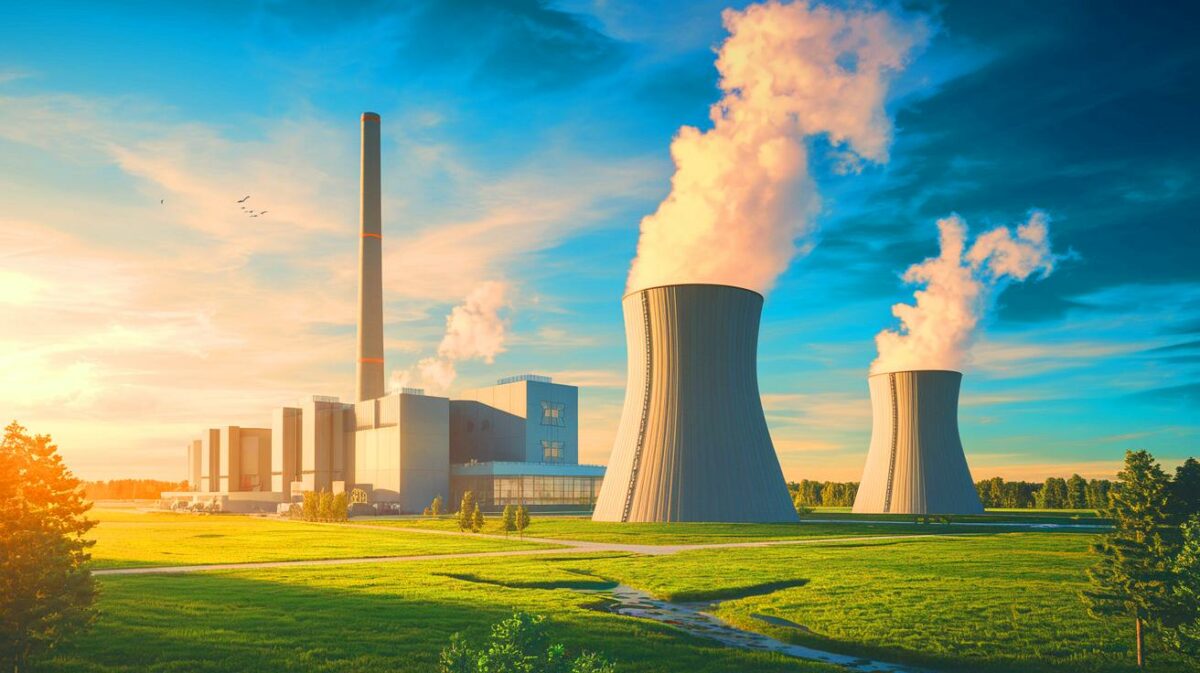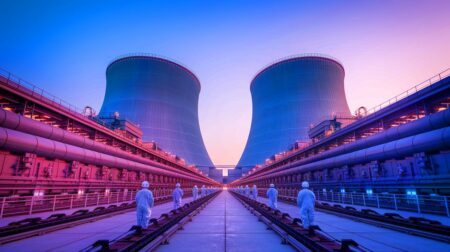| IN A NUTSHELL |
|
The demand for high-assay, low-enriched uranium (HALEU) is poised to become a pivotal element in the future of nuclear energy in the United States. As the Department of Energy (DOE) initiates the HALEU Availability Program, the landscape for advanced nuclear reactors is set to transform dramatically. This initiative promises to bring enhanced efficiency and reduced costs to the nuclear sector, providing a reliable, secure energy source. With the allocation of HALEU to five pioneering reactor developers, the U.S. aims to lead in the global nuclear energy arena, ensuring energy security and sustainability for its citizens.
Unleashing All Sources of Affordable, and Secure American Energy
The U.S. administration is on a mission to revolutionize the energy sector by leveraging every available resource, and nuclear energy is at the forefront of this agenda. Energy Secretary Chris Wright emphasizes the critical role of HALEU in this transformation, stating that the allocation of this material is a significant leap forward in revitalizing America’s nuclear sector. HALEU is not just a fuel; it is the cornerstone for achieving groundbreaking advancements in reactor design and efficiency.
The Department of Energy’s HALEU allocation process represents a strategic initiative to bridge the gap in domestic supply chains, ensuring that the materials required for next-generation reactors are sourced securely. This move is expected to spur innovation and drive the commercialization of advanced nuclear technologies, aligning with the broader objective of delivering affordable and reliable energy to the American populace.
West Texas Measles Outbreak Nears 150 Cases, Raising Concerns
Critical Material to Develop and Deploy Advanced Reactors
The significance of HALEU cannot be understated in the development of advanced nuclear reactors. Companies like TRISO-X, Kairos Power, Radiant Industries, Westinghouse Electric Company, and TerraPower have received conditional commitments from the DOE, highlighting the critical nature of this material. The Energy Act of 2020 laid the groundwork for the HALEU Availability Program, emphasizing the necessity of ensuring access to this vital resource for research, development, and commercial use.
Transportation and logistical challenges are being addressed as part of the DOE’s efforts to facilitate the deployment of HALEU. While current transportation packages are designed for highly enriched uranium, they are not suitable for large quantities of HALEU. The DOE is actively working on developing new transportation solutions to support the industry’s needs, ensuring that HALEU can be delivered efficiently and cost-effectively.
HALEU Required for Most Advanced Reactors
Advanced nuclear reactors necessitate the use of HALEU, enriched between 5% and less than 20%, to unlock their full potential. This enrichment level allows reactors to achieve more compact designs, enhancing their power output and operational efficiency. The DOE projects that domestic demand for HALEU could soar to 50 metric tons (approximately 55 tons) annually by 2035, underscoring the urgency of establishing a robust supply chain.
Efforts are underway to explore multiple avenues for providing HALEU to reactor developers, ensuring they have the resources needed for testing and demonstration. These initiatives are critical not only for the advancement of nuclear technology but also for the broader goal of securing America’s energy independence and environmental sustainability.
Innovative Reactor Designs and the Future of Energy
The allocation of HALEU is set to pave the way for innovative reactor designs that promise longer operational cycles and increased fuel utilization. The DOE’s commitment to supporting these developments is a testament to the potential for nuclear energy to play a pivotal role in America’s energy strategy. By embracing advanced technologies, the United States aims to position itself as a leader in nuclear innovation.
This forward-thinking approach aligns with global efforts to transition to cleaner energy sources, reducing reliance on fossil fuels and mitigating environmental impacts. As the world grapples with energy challenges, the U.S. is poised to demonstrate that nuclear energy, fueled by HALEU, can offer a sustainable and secure solution.
As the HALEU Availability Program gains momentum, the future of nuclear energy in the United States looks promising. The successful deployment of advanced reactors will not only enhance energy security but also contribute to economic growth and environmental preservation. With these developments underway, one must wonder how this transformation will influence global energy dynamics and what further innovations lie on the horizon?
Did you like it? 4.6/5 (28)









Is HALEU the secret ingredient to revolutionize nuclear energy? 🤔
Great article! But why is HALEU such a game changer in nuclear tech?
Does this mean cheaper energy bills for us in the future? Fingers crossed! 🙏
How does this affect our relationship with China in the energy sector?
Interesting read! Are there any environmental risks with using HALEU?
Thank you for the info! This is a significant step for the US energy sector. 🌟
Can the US really compete with China’s advances in nuclear technology?
Why does it take so long to develop these new reactors? Seems like ages!
Hope this doesn’t lead to another arms race! 😬
Is this going to make nuclear energy safer or more dangerous?
I’m curious, what are the main challenges in transporting HALEU?
Thanks for the update! This could be a huge win for clean energy.
Why is it called “low-enriched” if it’s supposed to be powerful?
How soon can we see these advanced reactors in action? 🚀
Does this initiative include job creation in the nuclear sector?
Nice article, but isn’t nuclear energy still controversial because of waste?
Could this lead to a decrease in carbon emissions globally?
Why aren’t we hearing more about this in the mainstream media?
Is there a risk of HALEU falling into the wrong hands? 😱
What safeguards are in place for the transportation of HALEU?
Are there any international collaborations involved in this project?
Seems promising, but how long before we can rely on nuclear power fully?
How does HALEU compare to traditional nuclear fuels in terms of efficiency?
Is HALEU production environmentally sustainable?
How does this affect the US’s dependence on fossil fuels?
Are there any potential health risks for communities near these new reactors?
This sounds like a sci-fi plot! Real-life innovation is amazing! 🤖
Will this new tech be affordable for developing countries too?
Do these developments mean nuclear power plants will be smaller in the future?
Exciting times for nuclear energy! Thanks for the insightful article. 🌍
It’s about time we see some innovation in nuclear energy!
How does the Energy Act of 2020 play into all of this?
Is this just a political move to counter China’s advancements?